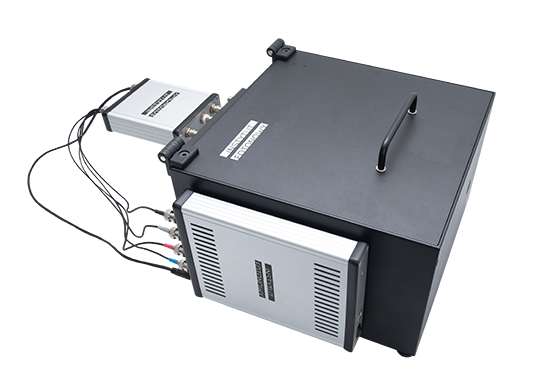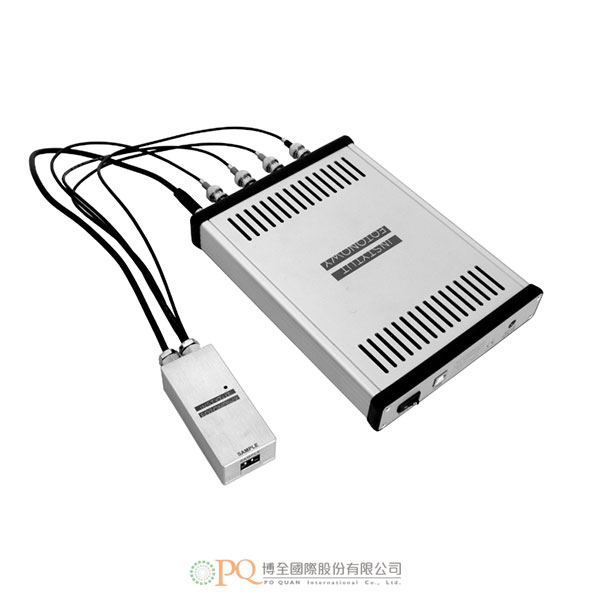
-
 AARONIA AG
AARONIA AG
-
 ADASH
ADASH
-
 Amptek
Amptek
-
 AOiP
AOiP
-
 AstroNova
AstroNova
-
 Automatic Research
Automatic Research
-
 AWSensors
AWSensors
-
 BASI
BASI
-
 BRS
BRS
-
 CALMET
CALMET
-
 CHECKLINE
CHECKLINE
-
 Cmc
Cmc
-
 C-Tech
C-Tech
-
 CTRL
CTRL
-
 DANATRONICS
DANATRONICS
-
 DV Power
DV Power
-
 EA Technology
EA Technology
-
 ECH
ECH
-
 EL-CELL
EL-CELL
-
 Electrothermal
Electrothermal
-
 Elsys
Elsys
-
 ELVEFLOW
ELVEFLOW
-
 Enapter
Enapter
-
 ENERGY SUPPORT
ENERGY SUPPORT
-
 Enervac
Enervac
-
 FASTEC
FASTEC
-
 Gaskatel
Gaskatel
-
 GE
GE
-
 GIUSSANI
GIUSSANI
-
 Globecore
Globecore
-
 GMW
GMW
-
 GREENLIGHT
GREENLIGHT
-
 GRZ
GRZ
-
 HIGH SENSE SOLUTIONSHTW
HIGH SENSE SOLUTIONSHTW
-
 HTW
HTW
-
 HUBER
HUBER
-
 HVPD
HVPD
-
 Ida
Ida
-
 Instytut Fotonowy
Instytut Fotonowy
-
 IVIUM
IVIUM
-
 Jacomex
Jacomex
-
 Jenway
Jenway
-
 JGG
JGG
-
 KEHUA TECH
KEHUA TECH
-
 Labdex
Labdex
-
 Labnics
Labnics
-
 LIQUID
LIQUID
-
 METERTEST
METERTEST
-
 Metrel
Metrel
-
 Microrad
Microrad
-
 micrux
micrux
-
 ndb
ndb
-
 Neware
Neware
-
 Norecs
Norecs
-
 Novocontrol
Novocontrol
-
 OKOndt Group
OKOndt Group
-
 OZM
OZM
-
 Pine Research
Pine Research
-
 Redoxme
Redoxme
-
 SATIR
SATIR
-
 SDT
SDT
-
 Serstech
Serstech
-
 VacCoat
VacCoat
-
 Zurich
Zurich
- AARONIA AG
- ADASH
- Amptek
- AOiP
- AstroNova
- Automatic Research
- AWSensors
- BASI
- BRS
- CALMET
- CHECKLINE
- Cmc
- C-Tech
- CTRL
- DANATRONICS
- DV Power
- EA Technology
- ECH
- EL-CELL
- Electrothermal
- Elsys
- ELVEFLOW
- Enapter
- ENERGY SUPPORT
- Enervac
- FASTEC
- Gaskatel
- GE
- GIUSSANI
- Globecore
- GMW
- GREENLIGHT
- GRZ
- HIGH SENSE SOLUTIONSHTW
- HTW
- HUBER
- HVPD
- Ida
- Instytut Fotonowy
- IVIUM
- Jacomex
- Jenway
- JGG
- KEHUA TECH
- Labdex
- Labnics
- LIQUID
- METERTEST
- Metrel
- Microrad
- micrux
- ndb
- Neware
- Norecs
- Novocontrol
- OKOndt Group
- OZM
- Pine Research
- Redoxme
- SATIR
- SDT
- Serstech
- VacCoat
- Zurich
-
該儀器是為時間分辨阻抗譜設計的。 測量並記錄了阻抗譜的時間演化過程。在許多應用中,樣品的阻抗隨時間變化。 通常使用阻抗譜儀測量一定頻率範圍內的阻抗。 然而,有時樣本的變化非常快,以至於從一種頻率到另一種頻率的連續掃描太慢而不起作用。例如,如果樣品的特性在頻率之間有顯著的變化,那麼阻抗譜可能很難解釋。 阻抗相機在一個鏡頭中拍攝整個頻譜,因此所有頻率都在同一時間處理。 這樣一個單一的時間頻譜被稱為一個幀,就像電影幀一樣。 然後可以獲得許多這樣的幀來記錄樣品阻抗譜隨時間的變化內容。該儀器專為時間解析阻抗分光儀所設計。一般而言,在執行阻抗光譜測量時,樣品的阻抗會隨後針對所施加的每個頻率進行測量。然而,如果檢查的是動態變化的樣品,其特性可能會在頻率掃描期間發生顯著變化。在這種情況下,所得到的阻抗譜可能難以解釋。阻抗相機可一次拍攝整個頻譜,並可選擇掃描範圍。同時處理所有頻率。若要觀察樣品的時間演變,可在指定的時間間隔內錄製許多幀。此儀器可研究不同類型樣品的動態,例如電化學感測器、暴露於特定媒介 (光線、溫度、催化劑等) 時會改變其特性的材料等。傳統的阻抗光譜儀 (IS) 或電化學阻抗譜 (EIS) 假定樣品是線性和時間不變 (LTI)。然而,大多數電化學樣品都有兩種特性:非線性和記憶。非線性效應因此,您可以在樣品中探索下列非線性效果:
- 高次諧波的產生。
- 互調失真 (當兩個輸入頻率在輸出端產生第三個頻率時)。
- 電流整流(當樣品在一個方向的電阻/阻抗與另一個電流方向的電阻/阻抗不同時)。
- 疊加衰減(輸入頻率的疊加不會在輸出中保留)。
樣品記憶效應在穩定的環境條件下,樣品阻抗光譜的時間演變會顯示先前的量測是否會影響下一次的量測。結果呈現測量結果以下列方式呈現:- 及時繪製3D Nyquist(或者Argand圖)。
- 及時繪製Bode圖。
- 在給定頻率下隨時間變化的阻抗演示。
- 差分圖可以看到阻抗隨時間產生的微小變化。
該阻抗相機 可用於即時觀察電化學感測器的阻抗變化。 例如,它也可以作為光電化學測量的一部分。阻抗相機是執行靜態光電流/光電壓測量設備,如光電光譜儀或者微型光電光譜儀的補充。包括哪些?
- 儀器包括:
- 測量電子模組
- 測量頭(附樣品)
- 連接電纜
- 12 V 電源
- 用於信號產生和採集的PC軟體

用於電化學測量的阻抗相機
阻抗相機結合電化學測頭和樣品室,可作為電化學樣品的專用測量裝置,以避免環境光線和外部電磁場的干擾。



示範結果
阻抗相機軟體的介面非常簡潔,不需要進行培訓。 下面所展示的是對一個並聯RC電路進行測量所獲取的結果,其中電阻依賴於塗層照明強度。右圖是Nyquist曲線(或者Argand圖),顯示了在不同時間頻率範圍內,測量阻抗所得到的實部和虛部。
我們可以看到,在測量序列中間部分電阻增加,阻抗半圓的直徑增加。 綠色部分是在時間上選擇相同頻率的測量點。 只改變電容的情況下,在C電路中,所有的半圓大小相同,但給定頻率點的位置會沿著一個圓進行移動。
單幀3D Nyquist(Argand圖)曲線 
振幅隨時間的變化的Bode 
Bode時間相位圖 
-
阻抗相機
- 序列中的幀數:不限。
- 一幀中的頻率數:不限。
- 產生電位信號的範圍:-1 ~ 1 V。
- 測頭類型: 基本型 (雙電極)/電化學 (三電極)。
- 取樣率: 1.22 kHz ÷ 10 MHz、
標準(基本)測頭- 電流範圍:10 mA、1 mA。
- 頻率範圍:1 mHz ÷ 1 MHz。
電化學測頭- 電流範圍:1 mA、100 μA、10 μA、1 μA、100 nA、10 nA。
- 頻寬範圍:2.5 MHz、1.3 MHz、300 kHz、35 kHz、3kHz、300 Hz。
-
The instrument is designed for the Time-Resolved Impedance Spectroscopy. Typically, when Impedance Spectroscopy measurements are performed, impedance of a sample is measured subsequently for each frequency applied. However, if a dynamically changing sample is examined, its properties may significantly change during the frequency sweep. A resulted impedance spectrum might be hard to interpret in such a case. The Time-Resolved Impedance Spectroscopy Analyzer takes an entire frequency spectrum with selectable sweep limits in a single shot. All the frequencies are handled at the same time. To observe the time evolution of a sample, many frames may be recorded with a given time interval. The instrument enables to investigate the dynamics of different types of samples, such as electrochemical sensors, materials that changes its properties when exposed to a given agent (light, temperature, catalyst, etc.) and others.
Instrument measures current flowing through the sample and voltage on the sample in response to a voltage signal generated as a superposition of frequencies.
Classic Impedance Spectroscopy (IS) or Electrochemical Impedance Spectroscopy (EIS) assumes that a sample is linear and time invariant (LTI).
However, most electrochemical samples are notoriously both: non-linear and have memory.Non-linear effects
Thus you can explore the following non-linear effects in your sample:- Higher harmonics generation,
- Intermodulation (when two input frequencies result in a third frequency at the output),
- Electric current rectification (when resistance/impedance of a sample in one direction differs from the resistance/impedance in the other direction of current flow),
- Superposition breakdown (superposition of input frequencies is not preserved in the output).
Sample memory effects
- Time evolution of impedance spectra of a sample under stable ambient conditions reveals if previous measurements affect the next.
Presentations of results
The measurement results are presented in:- 3D Nyquist (Argand) plot in time,
- Bode plots in time,
- Time evolution plot of an impedance at a given frequency contained in generated signal,
- Difference plots to observe relative changes in time,
- Plots with raw current and raw voltage frames collected.
Applications
The Time-Resolved Impedance Spectroscopy Analyzer is ideal to observe the real time development of impedance of electrochemical sensors. This type of measurements is complementary to static photocurrent/photovoltage measurements performed, for example, with Photoelectrochemical (PEC) Measurement Station:.device modules
The instrument consists of:- Measurement electronics module
- Measurement head: Basic/Electrochemical,
- 12 V power supply,

Time-Resolved Impedance Spectroscopy Analyzer for electrochemical measurements
Time-Resolved Impedance Spectroscopy Analyzer combined with the Electrochemical Head and the Electrochemical Shielding Box serves as a measurement setup dedicated for the electrochemical samples that needs to be screened from the ambient light and external EM fields.


exemplary results
The measurement results shown below are obtained for a parallel RC circuit where the resistance was depends on the oscillating illumination intensity.Nyquist (or Argand) plot presents a real and imaginary part of impedance measured for range of frequencies at various times. One can see the impedance value increases in the middle of the measuring sequence and the impedance semicircles grow in the diameter.
The green color selects the same frequency measurement points in time. If only capacitance was changed, in the RC circuit, all semicircles would be the same size but position of given frequency points would move along a circle.
A single frame 3D Nyquist (Argand) plot. 
Bode plots amplitudes in time. 
Bode plots phases in time. 
-
Time-Resolved Impedance Spectroscopy Analyzer
- Number of frames in a sequence: unlimited,
- Number of frequencies in a frame: unlimited,
- Range of generated potential signal: -1 ÷ 1 V,
- Measurement Head types: Basic (Two-Electrode)/Electrochemical (Three-Electrodes),
- Sampling rates: 1.22 kHz ÷ 10 MHz,
Basic Head
- Current ranges: 10 mA, 1 mA,
- Frequency ranges: 1 mHz ÷ 1 MHz,
Electrochemical Head
- Current ranges: 1 mA, 100 μA, 10 μA, 1 μA, 100 nA, 10 nA,
- Bandwidth ranges: 2.5 MHz, 1.3 MHz, 300 kHz, 35 kHz, 3kHz, 300 Hz,







